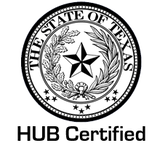|
Fire and EMS stations are used to house apparatus, equipment and other items needed to support operations. They contain the bulk of the assets of any department or company.
In many locations, stations are also a community hub providing meeting space, fundraising and social activities. Like any asset, a station must be maintained to hold its value. In emergency services, we take great pride in our equipment and its ability to perform under the most adverse conditions. Why are we confident in our equipment? We regularly check it and maintain it to help assure it will work as intended when it is needed. Are we taking the same level of care with our station(s)? Do we regularly inspect them to help ensure everything is working properly and that they are being maintained free of hazards? Self-inspections are a good way to document efforts to maintain a safe place to work and a safe place for our community and visitors. Periodic safety and maintenance inspections of station buildings and grounds allows for the identification of potentially hazardous conditions. These inspections may help minimize property damage, limit liability claims and ensure the safety of members, employees and visitors. These inspections may be used to evaluate:
If you are not sure where to start, or are looking to evaluate the program you have in place, VFIS can help. We have an award-winning distance learning class, In the Station: Best Practices in Station Safety, that provides guidance on areas to focus on during self-inspections. Access this course through VFIS University (vfisu.com) free of charge for VFIS clients. VFIS also has a self inspection form that may be used to document self-inspections. This can be found under SafetyCentral, Property Management.
0 Comments
Leave a Reply. |
|
|
© 2024 WinStar Insurance Group
13625 Ronald W. Reagan Blvd. Building 3, Suite 100 Cedar Park, Texas 78613 (512) 448-9928 [email protected] |
Home | About Us | Insurance | Training | Life & Health | Resources | Claims | News | Contact Us | Mission & Values | Privacy Statement
|
IMPORTANT NOTE: This Web site provides only a simplified description of coverages and is not a statement of contract. Coverage may not apply in all states. For complete details of coverages, conditions, limits and losses not covered, be sure to read the policy, including all endorsements, or prospectus, if applicable. Coverage CANNOT be bound, amended, or altered by leaving a message on, or relying upon, information in this Website or through E-Mail.
Licensed & doing business in the following states only: Texas, Oklahoma, New Mexico, Arkansas, & Mississippi
Licensed & doing business in the following states only: Texas, Oklahoma, New Mexico, Arkansas, & Mississippi





